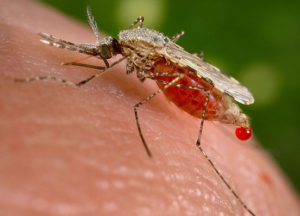
While malaria isn’t a current threat to most people living in mainland U.S., scientists highlighted their concern about the disease’s spread within urban African communities in the July 2019 issue of the Centers for Disease Control and Prevention Emerging Infectious Diseases publication.
This matters because the number of malaria cases could explode if it spreads to Africa cities, and the disease, in turn, would spread globally.
Malaria, a disease caused by a parasite, is transmitted to humans by the bite of the Anopheles mosquito. Around 219 million malaria cases are reported annually to the World Health Organization and around 92 percent of them occur in Africa, where three kinds of Anopheles thrive – the An. gambiae sensu stricto, the An. coluzzii and the An. funestus sensu stricto. Because mosquito populations fluctuate with rainfall, malaria has been prevalent in rural areas with strong seasonal variations, but is found less often in urban areas where there is less water and the three types of African Anopheles mosquitoes tend not to survive.
In 2016, however, another type of Anopheles mosquito – the An. stephensi – was found for the first time in Ethiopia and Djibouti, where they were breeding in man-made water containers and garden reservoirs. These mosquitoes are known to carry malaria in India, and Pakistan. Currently most malaria control programs don’t target urban areas for mosquitoes because there have been so few cases of malaria.
Because the An. stephansi can survive in urban areas and because Ethiopia and Djibouti and centers of international travel, public health officials are concerned that the mosquito will start spreading to other urban areas of Africa where human populations are exploding like Nairobi, Dar es Salaam, Kinshasa and Dakar.
If the mosquito does spread, the result could be an expansion in malaria, which is already killing about a half million people annually, mostly young children in sub-Sahara Africa.
“To halt the potential risk and prevent further spread of the vector requires urgent action,” write Willem Takken, a medical and veterinary entomology professor at Wageningen University & Research in the Netherlands, and Steve Lindsay, a professor in public health entomology at Durham University, in the CDC publication.
If malaria gets out of control, the risks increase of the disease spreading to more continents outside Africa. Already about 1,700 cases of malaria are reported in U.S. hospitals annually. The patients contracted malaria outside the U.S., but more malaria would mean more people showing up with the disease in American hospitals.
Malaria is a disease that is “only a plane ride away,” John Aitchison, a scientist with the Center for Infectious Disease Research, told AHCJ in 2018.
To learn more about covering malaria, see this new tip sheet.








